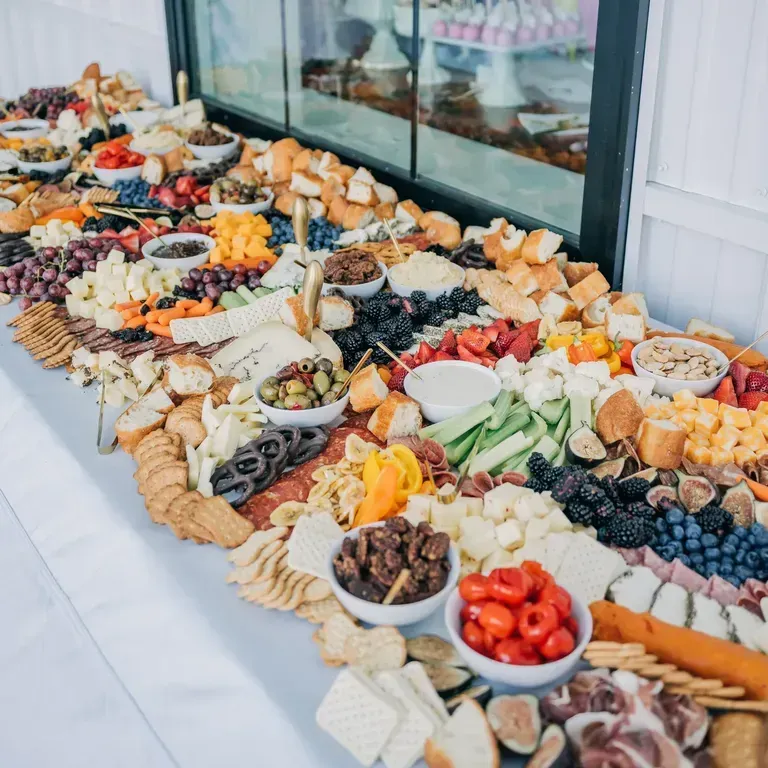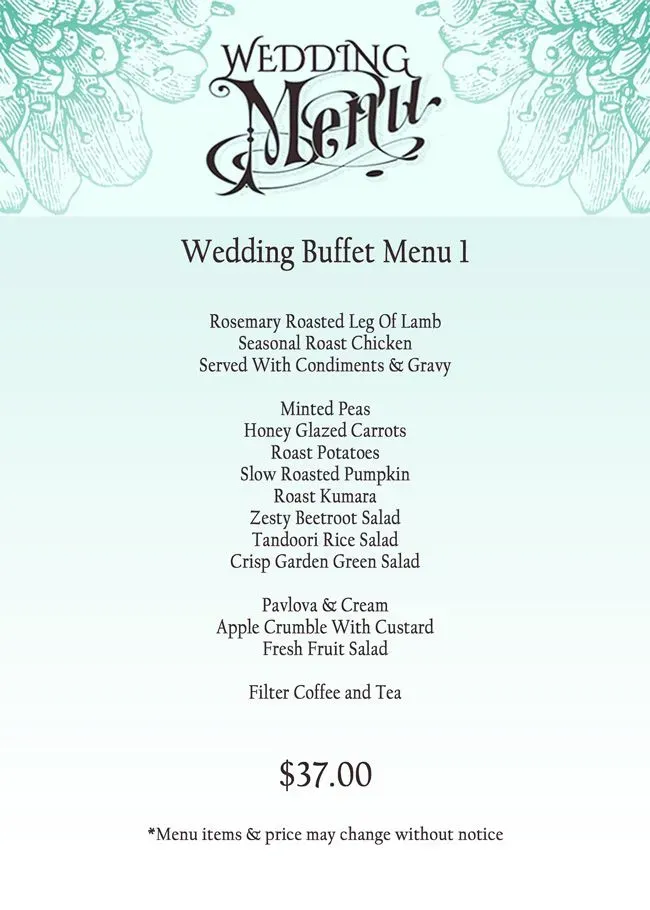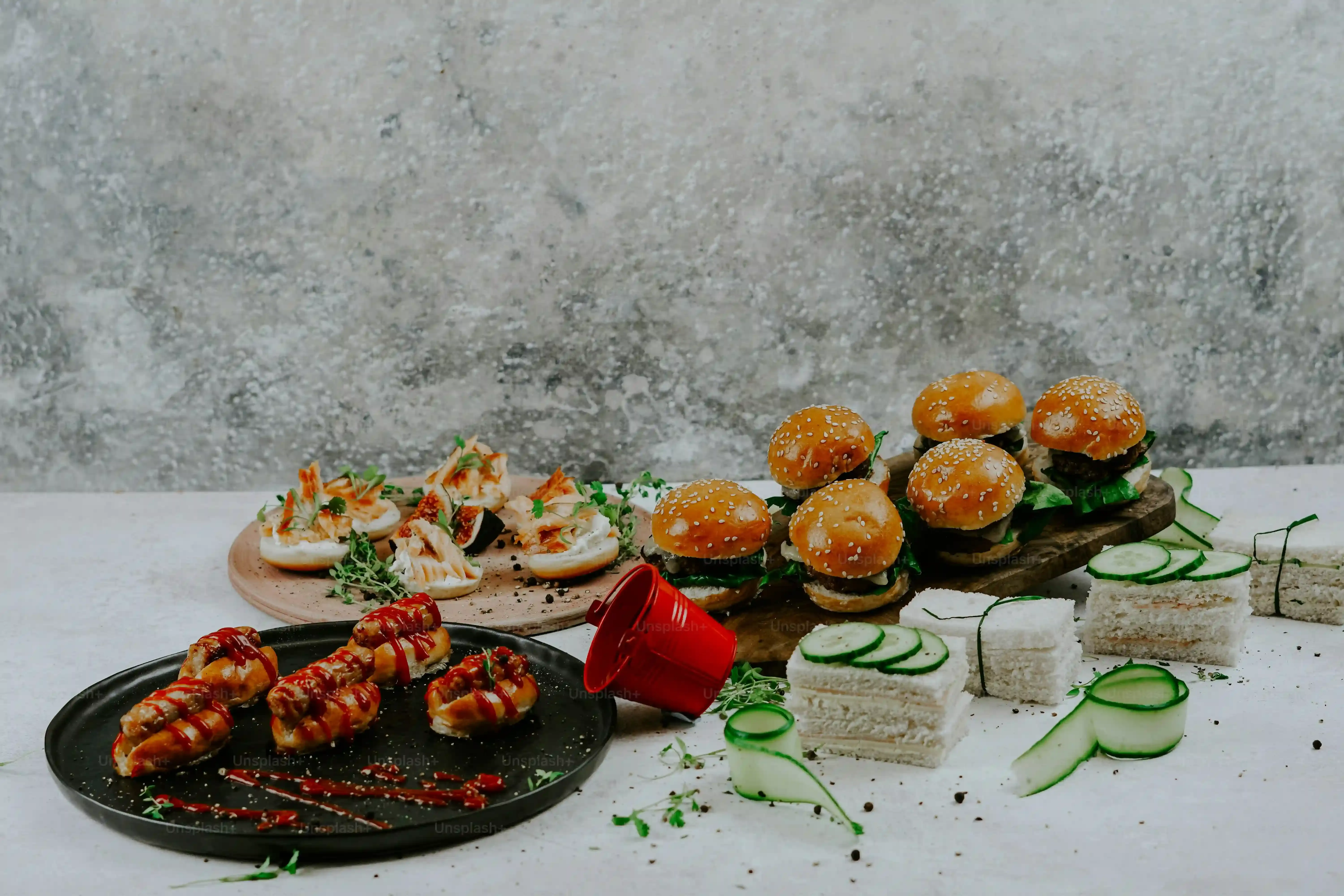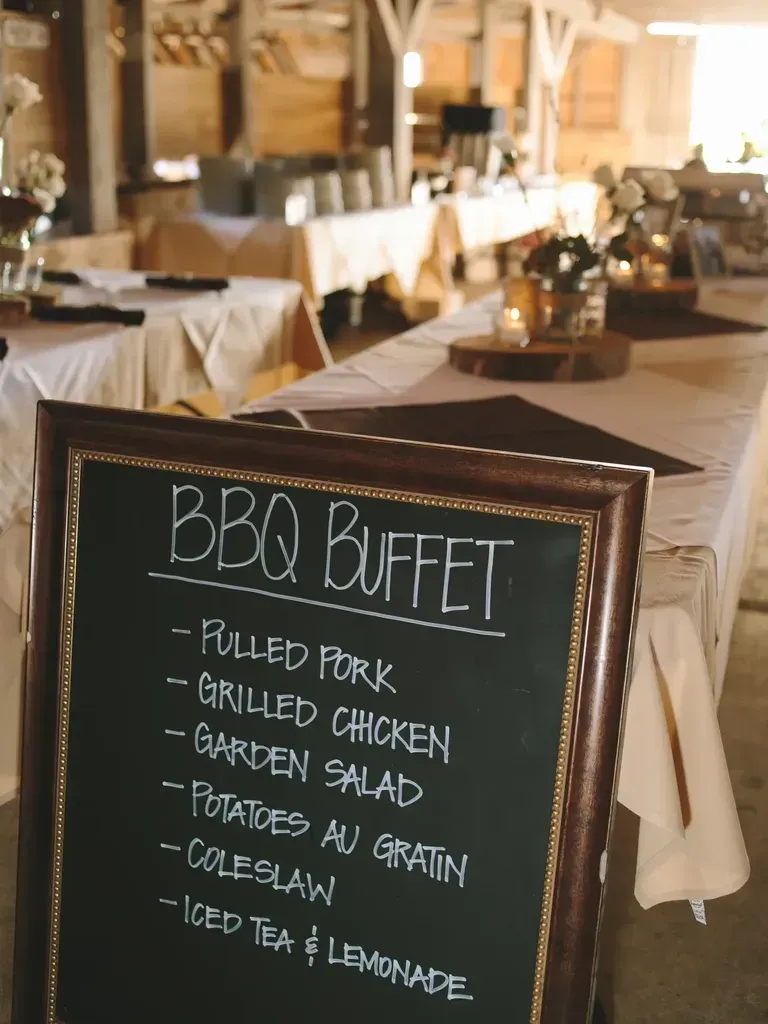Table of Contents
let's talk about one of the biggest decisions after saying "yes": how you're going to feed everyone. The pressure is real. While multi-course plated dinners feel fancy, the reliable, crowd-pleasing option that many couples lean towards is the buffet. Specifically, nailing down thetypical wedding buffet menucan feel like a puzzle, but it doesn't have to be. Forget the pressure to have something wildly avant-garde that half your guests won't touch. People often just want good, solid food they recognize and enjoy.
Understanding What Makes a Typical Wedding Buffet Menu

Understanding What Makes a Typical Wedding Buffet Menu
Why "Typical" Works for Wedding Buffets
When we talk about atypical wedding buffet menu, we're not aiming for boring or uninspired. We're talking about reliable classics. Think comfort food, elevated just enough for a special occasion. This isn't the time to experiment with molecular gastronomy unless your entire guest list is composed of adventurous food critics. A typical menu focuses on pleasing a broad range of palates, from your picky cousin to your steak-loving uncle. It’s about offering enough variety that everyone finds something they genuinely want to eat, without overwhelming them with obscure choices. The goal is satisfied guests, not a culinary thesis statement.
This approach also simplifies logistics. Caterers who specialize in typical buffet fare have their systems down. They know how much food to prepare, how to keep it warm (or cold), and how to manage the flow of people. It reduces the chances of things going sideways, like running out of the popular dish or having a line snaking out the door because the carving station is holding up everything. It's about practical execution as much as it is about the food itself.
Defining the Core Elements of a Typical Buffet
So, what are these reliable elements that define atypical wedding buffet menu? Usually, it starts with two main protein options. Beef or chicken are almost always present, often prepared in a crowd-pleasing way – maybe sliced roast beef with gravy or chicken breast with a creamy sauce. Fish is a common third option, often something mild like salmon. Then you add a starch, typically mashed potatoes, roasted potatoes, or rice pilaf. A cooked vegetable, like green beans or roasted carrots, makes an appearance, often alongside a couple of salads, usually a leafy green salad and perhaps a pasta or potato salad.
This basic structure provides familiar choices that most people enjoy. It’s predictable, yes, but in the best possible way. It's the culinary equivalent of a comfortable pair of shoes – maybe not groundbreaking, but they get the job done without blisters. Deviations exist, of course, but this core setup forms the backbone of countless successful wedding buffets. It's the foundation upon which you can add personal touches, not reinvent the wheel entirely.
- Two main proteins (e.g., beef, chicken)
- One or two starch options (e.g., potatoes, rice)
- A cooked vegetable
- Two or more salads (e.g., green salad, pasta salad)
- Bread rolls or similar
Main Course MustHaves for a Typical Wedding Buffet Menu

Main Course MustHaves for a Typical Wedding Buffet Menu
The Undisputed Champions: Beef and Chicken
When you're building atypical wedding buffet menu, you start with the heavy hitters. Beef and chicken are almost non-negotiable. Think sliced roast beef with a savory au jus or gravy. It's familiar, it's comforting, and frankly, most people know how to eat it without making a mess. Chicken breast is another staple, often prepared simply – maybe roasted with herbs or served with a light cream sauce. These two cover a lot of ground. They appeal to different tastes and are generally safe bets even for less adventurous eaters. Nobody wants to be the guest who stares blankly at a dish they've never seen before while their stomach rumbles.
The beauty of these classics is their versatility. A good caterer can make roast beef feel a bit more special than Sunday dinner, and chicken doesn't have to be dry and bland. The sauces and seasonings elevate them. Plus, offering both gives guests a primary choice right off the bat. It sets the stage for a buffet experience that feels generous and considers varying preferences.
Adding Variety: Fish and Vegetarian Options
Beyond the standard meat duo, atypical wedding buffet menuoften includes a third main option, frequently fish. Salmon is a popular choice, maybe baked or grilled with lemon and dill. It’s lighter than beef or chicken and offers something different. It’s also generally well-liked and perceived as a slightly more elegant addition. Including fish caters to those who prefer seafood or are looking for a less heavy plate.
Crucially, you need a dedicated vegetarian option that isn't just a sad pile of steamed vegetables. This is where things can get slightly more interesting, though still usually within the realm of 'typical'. Think pasta primavera, a hearty vegetable lasagna, or maybe stuffed bell peppers. It needs to feel like a main course, not an afterthought. Ignoring your vegetarian guests is a surefire way to make someone feel unwelcome, and frankly, it’s just bad form.
- Roast Beef with gravy/au jus
- Baked or Roasted Chicken Breast
- Baked Salmon or other mild fish
- Hearty Vegetarian Dish (e.g., Lasagna, Stuffed Peppers)
Why These Choices Just Work
These main course components form the backbone of atypical wedding buffet menubecause they are reliable crowd-pleasers. They represent different textures and flavors, ensuring that guests with diverse preferences can build a satisfying plate. You have the robustness of beef, the lean familiarity of chicken, the lightness of fish, and a substantial option for non-meat eaters. It’s a formula that minimizes risk and maximizes guest satisfaction. While it might not win awards for innovation, it consistently delivers a positive dining experience, which, let's be honest, is the main goal when feeding a large group of people celebrating your big day.
Think about your own experiences at events. What do you gravitate towards on a buffet line? Often, it’s something you recognize and trust will taste good. That’s the power of the typical choices. They remove the guesswork for your guests and provide a solid foundation for the rest of the meal.
Rounding Out Your Typical Wedding Buffet Menu with Sides and Salads

Rounding Out Your Typical Wedding Buffet Menu with Sides and Salads
The Essential Starch and Cooked Veggie Lineup
Alright, you've got your mains sorted – the beef, the chicken, maybe some fish or a vegetarian option. Now, let's build out the plate. Atypical wedding buffet menuisn't complete without solid starches and vegetables. These are the unsung heroes that fill the plate and provide balance. Think about it: nobody just eats a slab of roast beef. They need something alongside it. Mashed potatoes are a classic for a reason; they're comfort in a scoop. Roasted potatoes, maybe with a little rosemary and garlic, offer a different texture. Rice pilaf is another common choice, especially if you have a saucier main or a fish option. It’s about offering familiar, easy-to-eat options that pair well with everything else on the line.
For cooked vegetables, green beans are almost standard issue. They're relatively inexpensive, easy to prepare for a crowd, and most people don't actively dislike them. Roasted carrots or broccoli are also frequent flyers on the buffet circuit. The key here isn't culinary fireworks, but reliable, palatable options. These sides ensure guests can build a complete, satisfying meal without venturing into unfamiliar territory. They provide that necessary bulk and nutritional balance, even if nobody is raving about the green beans later.
Salads: Freshness on the Line
Everytypical wedding buffet menuneeds some fresh elements to cut through the richness of the mains and starches. This is where salads come in. You absolutely need a basic tossed green salad. Think mixed greens, maybe some cherry tomatoes, cucumber, and a couple of dressing options (vinaigrette and ranch are usually safe bets). It’s simple, it’s light, and it provides that refreshing crunch. Beyond the leafy greens, cold salads are buffet mainstays. Potato salad, pasta salad, or coleslaw are incredibly common. They're easy to make in large batches, hold well at temperature, and add different textures and flavors to the plate.
Consider the logistics here. These cold salads can be prepped well in advance, easing the pressure on the kitchen during service. They also offer heartier alternatives for guests who might want something more substantial than just lettuce. A good potato salad, creamy and loaded with fixings, can be surprisingly popular. These salads might not be glamorous, but they are workhorses of the buffet line, providing necessary variety and satisfying familiar cravings.
- Tossed Green Salad with dressing options
- Potato Salad
- Pasta Salad (e.g., Rotini with veggies, Italian dressing)
- Coleslaw
Bread and Other Little Extras
Don't forget the bread! Simple dinner rolls are a must on atypical wedding buffet menu. They provide something to soak up sauces, make mini-sandwiches with leftover roast beef, or just serve as a familiar carb fix. Butter should always be available alongside. Sometimes you might see a fancier bread, like a focaccia or cornbread, but plain rolls are the standard. These small touches make a big difference in the overall guest experience. It’s about providing those little comforts that complete the meal.
Other small additions might include pickles, olives, or a relish tray. These aren't strictly necessary but can add pops of flavor and color. They are easy for caterers to provide and guests can grab them as they wish. Think of them as the culinary equivalent of accent pillows – not essential for function, but they make the setup feel more complete and considered. It's these small details that elevate a standard buffet from merely functional to genuinely satisfying.
Sweet Conclusions: Dessert Ideas for Your Typical Wedding Buffet Menu

Sweet Conclusions: Dessert Ideas for Your Typical Wedding Buffet Menu
Sweet Conclusions: Dessert Ideas for Your Typical Wedding Buffet Menu
the savory stuff is done. Guests are full, happy, and maybe a little tipsy. Now comes the grand finale: dessert. While the wedding cake gets all the glory, atypical wedding buffet menudessert spread is where you can offer variety without going completely off the rails. Forget the single slice of cake. People love options. Mini cheesecakes, brownies, cookies, fruit tarts, and maybe some sort of chocolate mousse or pudding are standard players here. They're easy to grab, require minimal fuss (no cutting required!), and cater to different sweet cravings. It’s about providing accessible indulgence, allowing guests to sample a few different bites rather than committing to one big slice. Plus, let's be real, mini desserts look cute piled on a plate.
Making the Typical Work for You
So, there you have it. The bones of atypical wedding buffet menuaren't rocket science; they're proven choices that feed a crowd without drama. You've got your reliable proteins, the sides that everyone expects, and desserts that hit the sweet spot. It might not win you points for avant-garde culinary innovation, but it does ensure your guests leave reasonably full and happy, which, let's be honest, is the main objective when you're feeding a hundred-plus people. Focus on getting the basics right and hiring a caterer who can execute them well. Sometimes, the most memorable part of the meal isn't the most exotic dish, but simply getting seconds of something comforting.